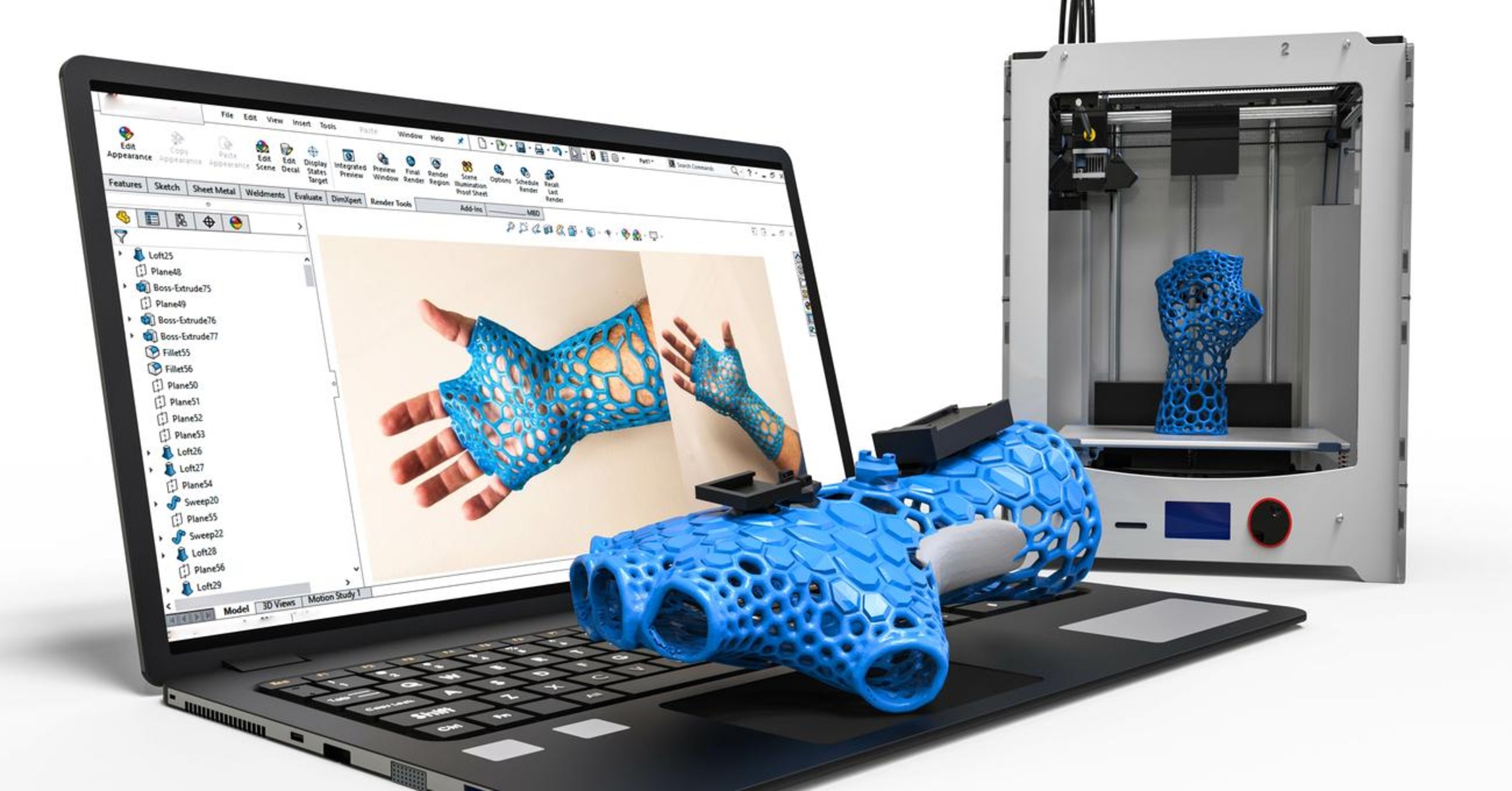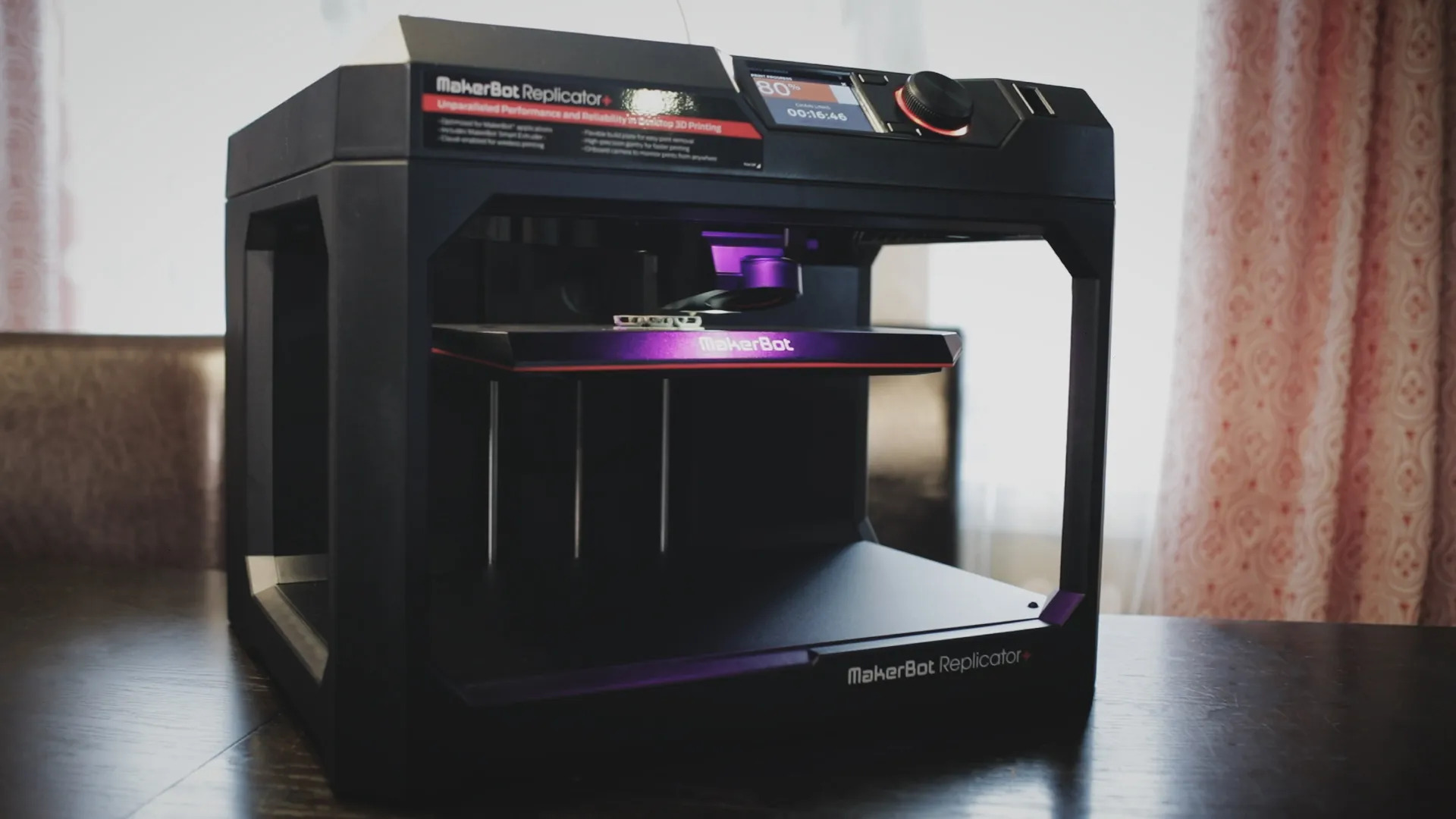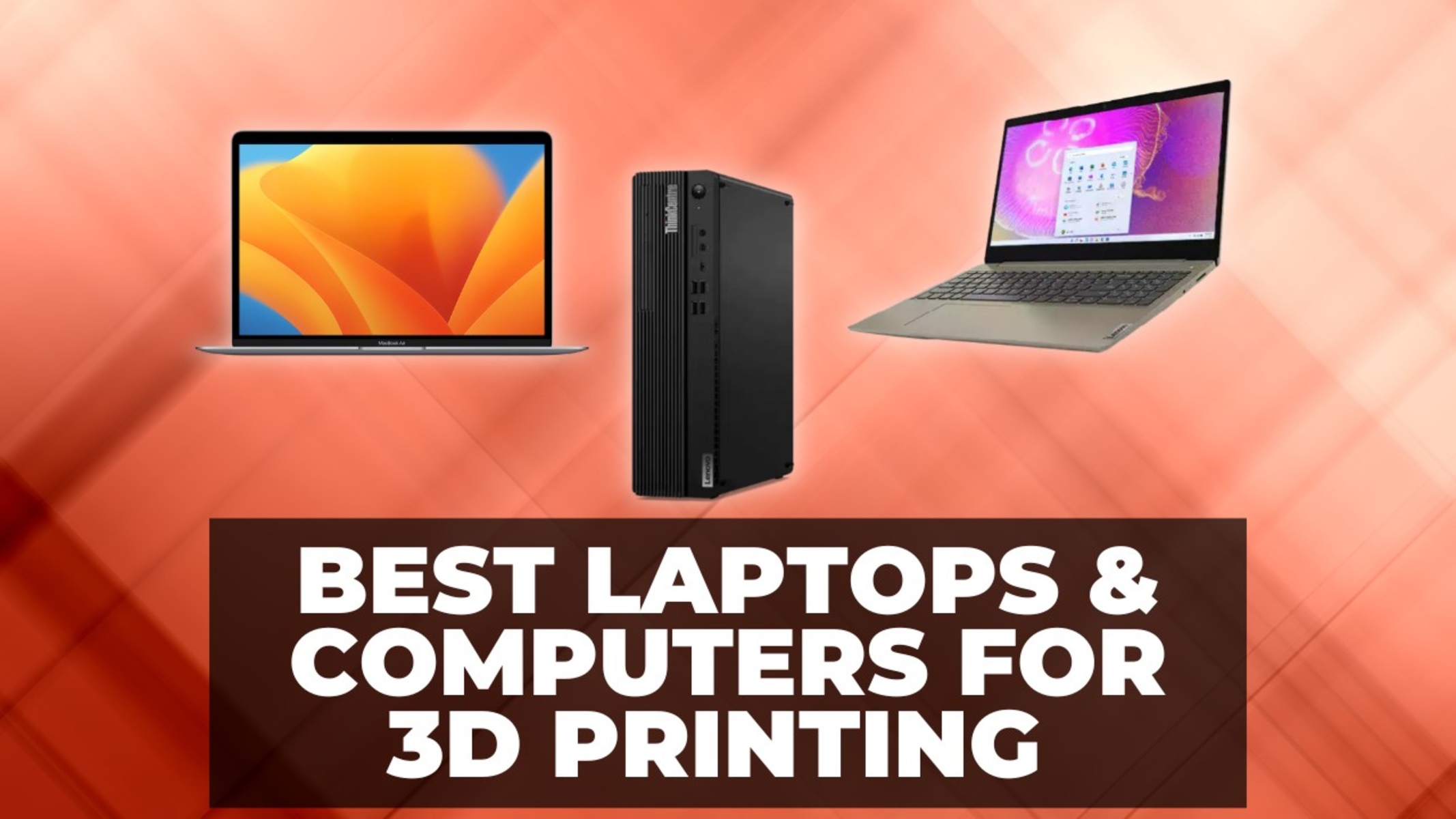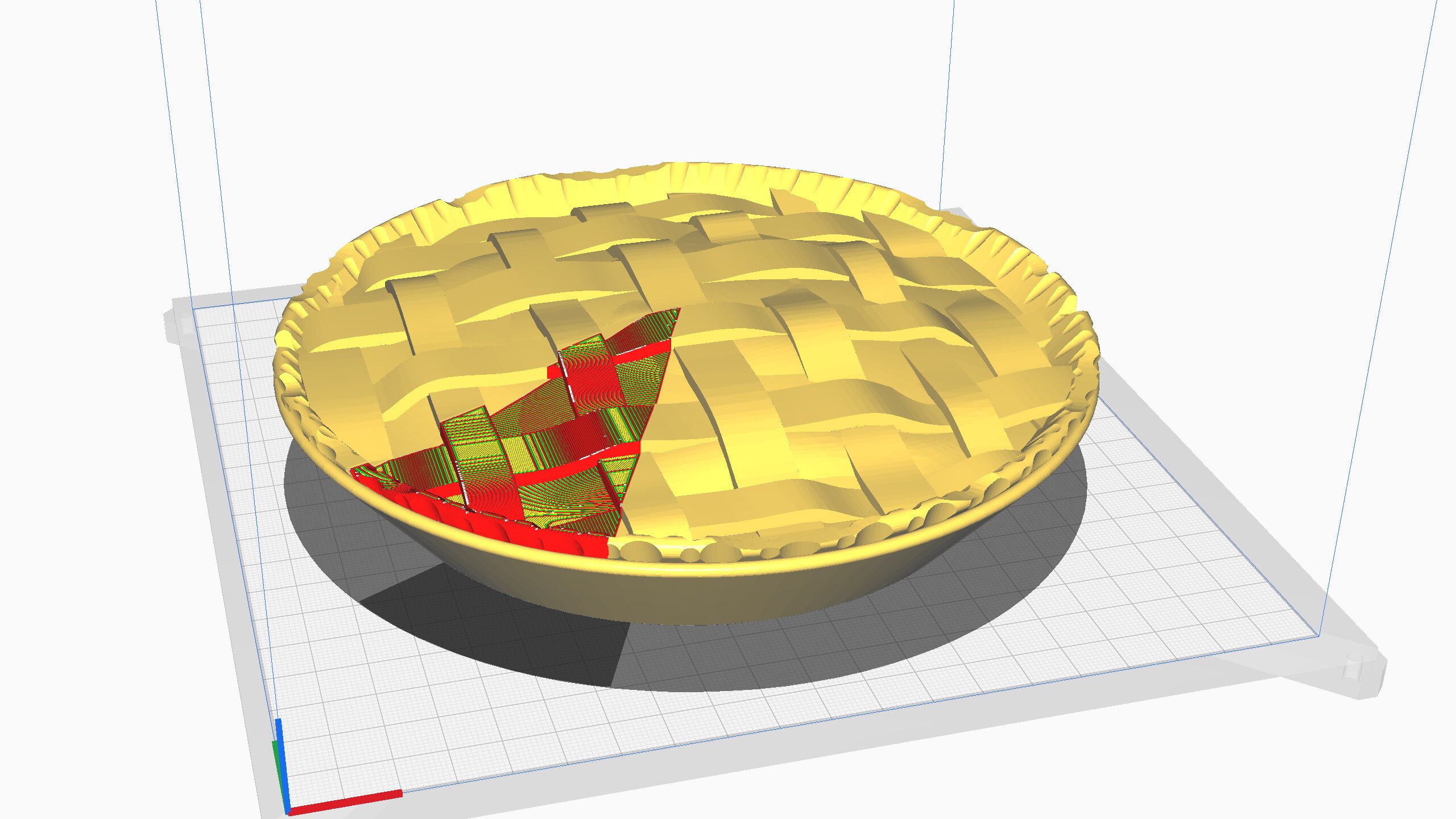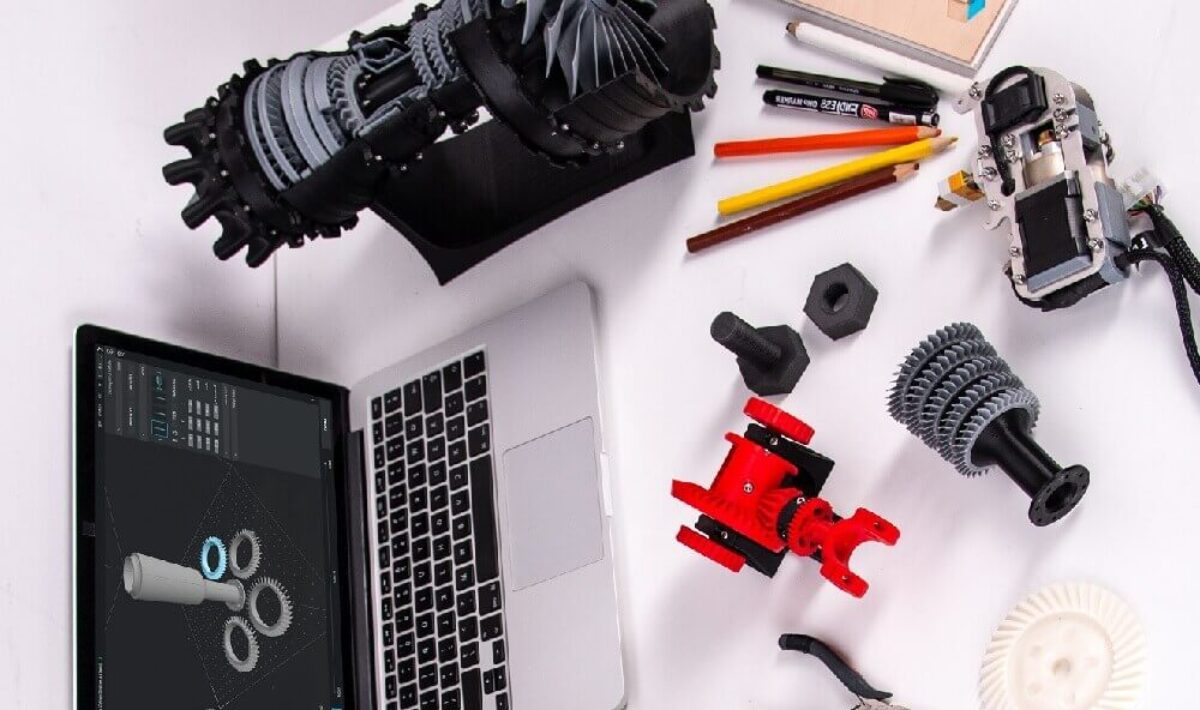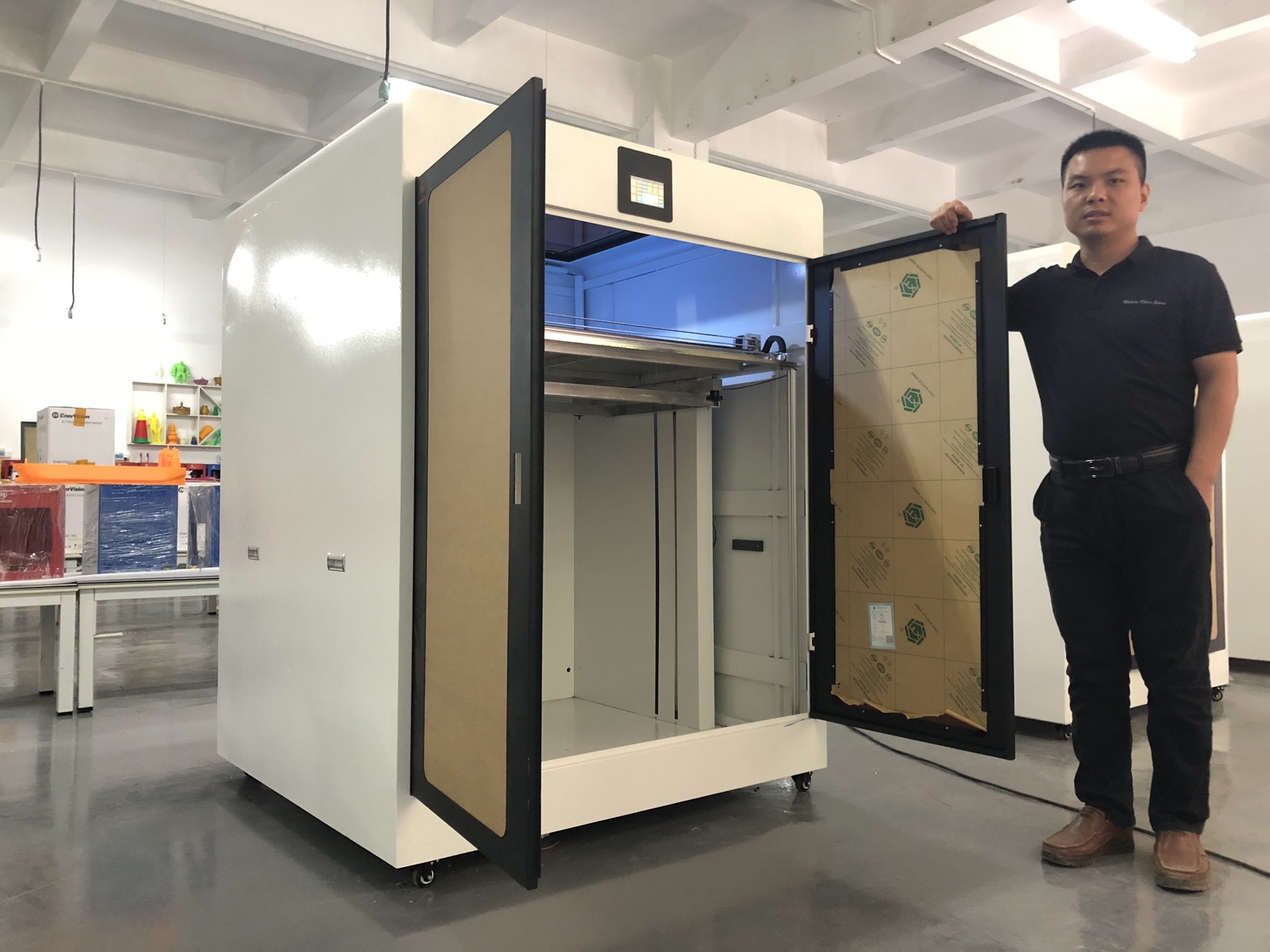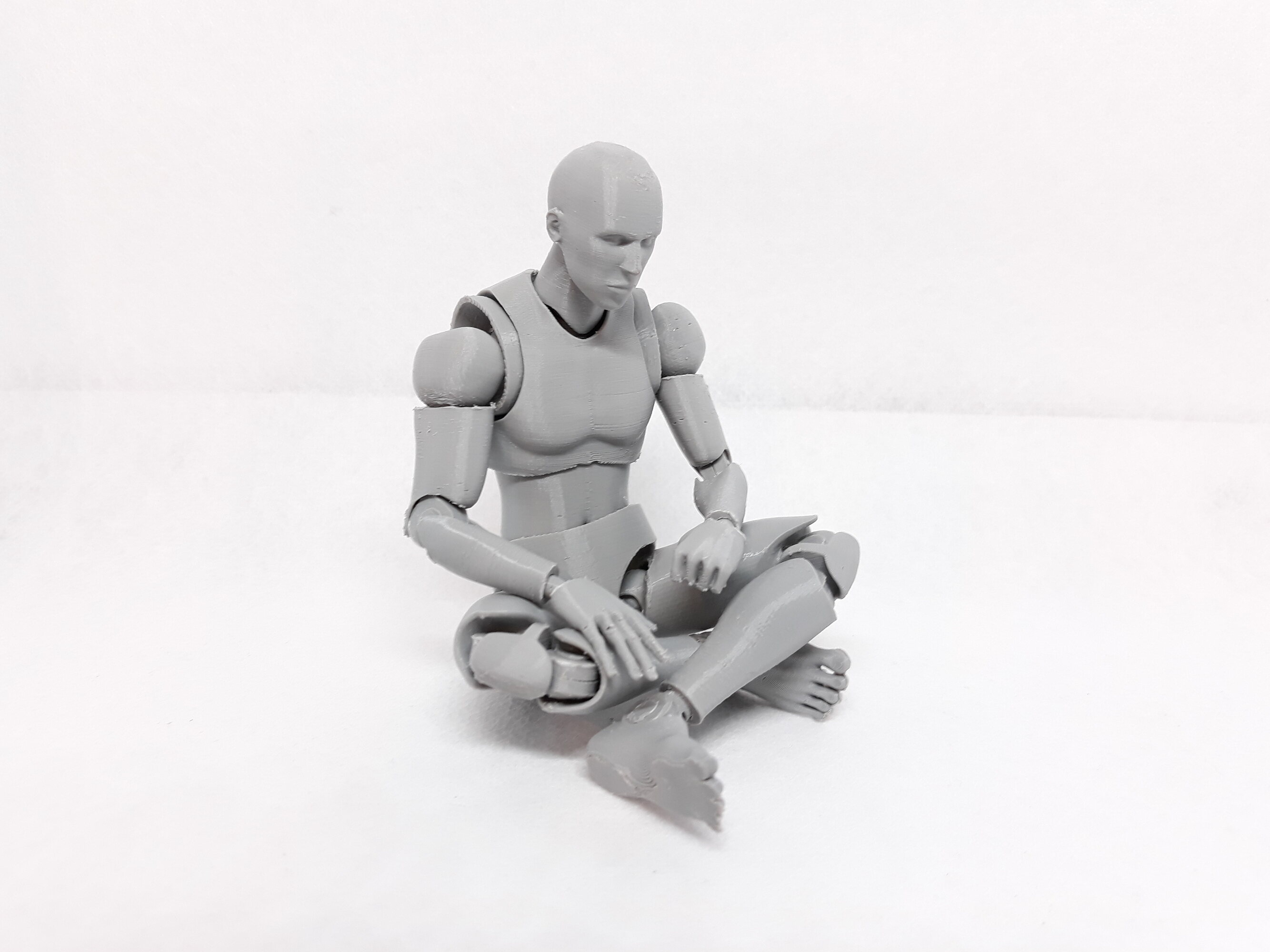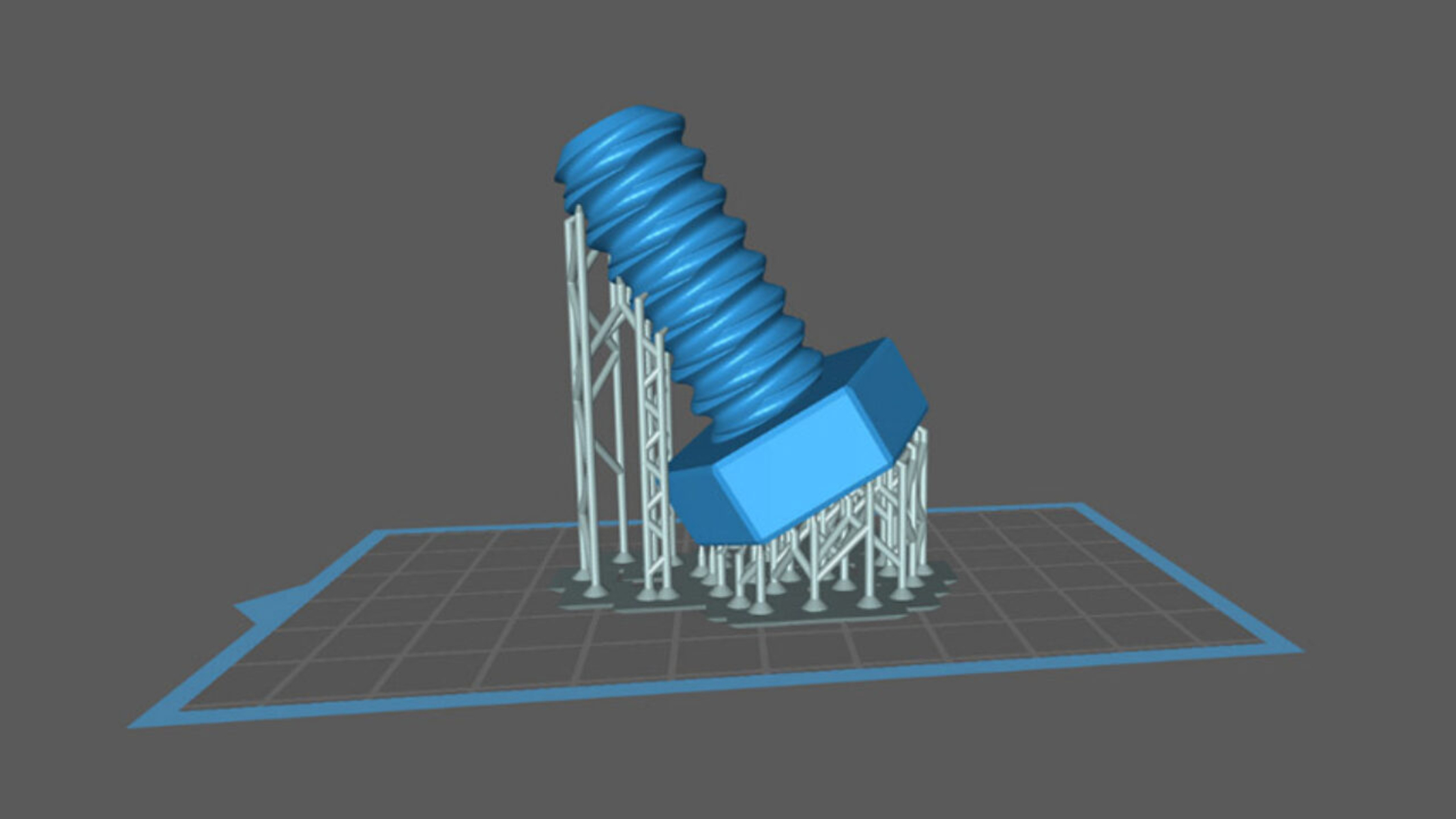Introduction
3D printing has revolutionized various industries, from manufacturing to healthcare. This cutting-edge technology allows you to create physical objects from digital designs, enabling rapid prototyping, customization, and production. However, to bring your 3D designs to life, you need the right software that can optimize and prepare your models for printing. With a plethora of options available, it can be overwhelming to choose the best 3D printing software for your needs.
In this article, we will explore the top software options available in the market for 3D printing. Whether you are a beginner or an experienced user, these software solutions offer a range of features to simplify the design process and ensure high-quality printed output. We will delve into the key features and benefits of each software, allowing you to make an informed decision that aligns with your specific requirements.
It’s important to note that the best software for 3D printing will ultimately depend on your level of expertise, the complexity of your projects, and the specific functionalities you need. Some software options are more user-friendly for beginners, while others offer advanced tools and capabilities for professionals.
Throughout this article, we will discuss various factors to consider when selecting the right software, including compatibility with different 3D printers, file format support, ease of use, customization options, and pricing structures. By considering these factors and reviewing the pros and cons of each software option, you can identify the software that best suits your needs and enhances your 3D printing experience.
Without further ado, let’s dive into the top 3D printing software options available in the market today. Whether you are a hobbyist, a designer, or an engineer, there is a software solution that can elevate your 3D printing projects and bring your ideas to life.
Types of 3D Printing Software
When it comes to 3D printing software, there are several types available, each serving specific purposes. Understanding the different types can help you choose the one that aligns with your needs and expertise. Let’s explore the main types of 3D printing software:
- Modeling Software: This type of software helps you create, modify, and refine your 3D models. It allows you to design objects from scratch or import existing models and make modifications. Modeling software often provides a wide range of tools, such as shape creation, sculpting, texturing, and mesh editing.
- Slicing Software: Slicing software is essential for preparing your 3D models for printing. It takes the 3D model and generates a set of instructions, known as G-code, that your 3D printer understands. Slicing software allows you to adjust settings like layer height, print speed, and support structures. It also provides a preview of the sliced model to ensure optimal printing.
- CAD Software: Computer-Aided Design (CAD) software is widely used in engineering and product design. It enables precise and accurate modeling of complex objects. CAD software is known for its advanced features, parametric modeling capabilities, and compatibility with mechanical design principles.
- Open-Source Software: Open-source software refers to 3D printing software that is freely available, allowing users to modify and enhance the code. This type of software is often community-driven, with active user forums and continuous updates. Open-source software is popular among 3D printing enthusiasts and professionals alike.
Each type of software has its own strengths and limitations. For beginners, user-friendly modeling software or slicing software with intuitive interfaces may be more suitable. Professionals and experienced users, on the other hand, may prefer the advanced features and capabilities offered by CAD software or open-source software. It’s important to evaluate your specific requirements and choose the type of software that best aligns with your goals and proficiency level.
Overview of the Best 3D Printing Software
Now that we have explored the types of 3D printing software, let’s dive into the top software options available in the market. These software solutions offer a range of features and functionalities to optimize your 3D printing workflow and ensure high-quality prints. Here is an overview of the best 3D printing software:
- Ultimaker Cura: Ultimaker Cura is a popular slicing software known for its user-friendly interface and powerful optimization capabilities. It supports a wide range of 3D printers and offers advanced features like customizable supports, print speed adjustments, and multi-material printing.
- PrusaSlicer: PrusaSlicer is an open-source slicing software developed by Prusa Research. It provides excellent print quality and offers advanced features such as customizable layer heights, support structures, and filament settings. PrusaSlicer is compatible with a wide range of 3D printers.
- Autodesk Fusion 360: Autodesk Fusion 360 is a comprehensive CAD software that provides a seamless workflow from design to 3D printing. It offers powerful modeling tools, parametric design capabilities, and cloud-based collaboration. Fusion 360 is widely used in various industries and supports a wide range of 3D printers.
- Simplify3D: Simplify3D is a feature-rich slicing software that offers precise control over print settings. It provides advanced features like multiple processes, customizable supports, and print quality optimization. Simplify3D is compatible with a wide range of 3D printers and allows for simultaneous printing of multiple models.
- Slic3r: Slic3r is an open-source slicing software known for its speed and flexibility. It offers advanced features like variable layer heights, dynamic layer heights, and infill customization. Slic3r supports a wide range of 3D printers and allows for manual control of print settings.
- TinkerCAD: TinkerCAD is a beginner-friendly modeling software that offers a simple and intuitive interface. It is web-based and provides basic design tools, making it ideal for educational purposes and introductory 3D modeling projects.
- MeshMixer: MeshMixer is a powerful mesh editing software that allows you to refine your 3D models with precision. It offers features like mesh sculpting, re-meshing, and support structure generation. MeshMixer is commonly used for complex geometry modifications and preparing models for 3D printing.
- SolidWorks: SolidWorks is a professional-grade CAD software widely used in engineering and product design. It offers advanced modeling capabilities, simulation tools, and collaboration features. SolidWorks is known for its accuracy, precision, and compatibility with industry standards.
- Blender: Blender is a versatile open-source software that combines 3D modeling, animation, and rendering capabilities. It offers a wide range of tools and features for creating complex models and visualizations. Blender’s extensive community and continuous development make it a powerful option for 3D printing.
Each software option has its own unique features and strengths. Consider your specific requirements, such as ease of use, compatibility with your 3D printer, and the complexity of your projects, to choose the software that best suits your needs. In the next section, we will explore the factors to consider when selecting the ideal 3D printing software for your projects.
Ultimaker Cura
Ultimaker Cura is a versatile and user-friendly slicing software that has gained popularity among 3D printing enthusiasts and professionals. It offers a range of features to optimize your printing process and ensure high-quality results. Here is an overview of what Ultimaker Cura has to offer:
Compatibility: Ultimaker Cura is compatible with a wide range of 3D printers, making it a versatile option for users with different printer models. It supports popular brands such as Ultimaker, Prusa, Creality, and many more. This ensures that you can easily integrate Cura into your existing setup without compatibility issues.
User-friendly Interface: Cura provides an intuitive and user-friendly interface, making it accessible for beginners and experienced users alike. The software incorporates a drag-and-drop functionality for easy model placement and offers a visual preview of the sliced model. The user interface is clean and organized, allowing for easy navigation and configuration of print settings.
Advanced Customization: Cura offers a wide range of customizable settings, allowing you to tailor the printing process to your specific needs. You can adjust parameters such as layer height, print speed, infill density, and support structures. This level of customization ensures that you have precise control over the printing process and can achieve the desired quality and functionality of your prints.
Customizable Supports: One standout feature of Ultimaker Cura is its support structure generation. The software automatically generates supports for overhanging parts of the model, ensuring stable and accurate prints. Cura also allows for manual modifications to support structures, giving you full control over their placement and density. This feature is especially useful for complex models with intricate geometries.
Multi-material Printing: Cura supports multi-material printing, allowing you to create objects using different filaments or colors. You can assign specific materials to different parts of the model, resulting in visually stunning and functional prints. This flexibility opens up a whole new realm of possibilities for creative and innovative designs.
Overall, Ultimaker Cura is a reliable and powerful slicing software that offers a seamless interface and advanced customization options. Whether you are a beginner looking for simplicity or an experienced user in need of precise controls, Cura caters to a wide range of users. Its compatibility with various 3D printers and the ability to generate high-quality supports and enable multi-material printing make it a top choice for many 3D printing enthusiasts and professionals.
PrusaSlicer
PrusaSlicer, developed by Prusa Research, is a powerful and open-source slicing software that has gained a strong following in the 3D printing community. Built with a focus on high-quality prints and customization, PrusaSlicer offers a range of advanced features. Let’s take a closer look at what PrusaSlicer has to offer:
User-Friendly Interface: PrusaSlicer provides a user-friendly interface that is intuitive and easy to navigate. The software offers a simplified layout with clearly labeled options, making it suitable for both beginners and experienced users. The straightforward design ensures that users can easily access and modify settings as needed.
Print Quality: PrusaSlicer is known for its excellent print quality, delivering accurate and detailed prints. The software provides advanced features such as customizable layer heights, adaptive layer settings, and variable infill densities. These features enable users to achieve precise control over the printing process and produce high-quality prints with ease.
Customization: PrusaSlicer allows for extensive customization of print settings, catering to the needs of different 3D printing projects. Users have full control over parameters such as print speed, print temperature, infill patterns, and support structures. This level of customization ensures that you can optimize your prints based on your specific requirements.
Automatic Support Generation: PrusaSlicer offers an automated support structure generation feature that assists in the creation of stable and accurate prints. The software analyzes the model and generates supports for overhanging sections, eliminating the need for manual support placement in most cases. Additionally, PrusaSlicer allows for the adjustment of support settings, giving users control over the density and placement of supports.
Multi-Material Printing Support: PrusaSlicer fully supports multi-material printing, enabling you to create prints with different filaments or colors. The software provides tools for assigning specific materials to different parts of the model, allowing for complex and visually striking prints. This feature opens up possibilities for creating functional, multi-component designs with ease.
Overall, PrusaSlicer is a powerful and feature-rich slicing software that offers excellent print quality and advanced customization options. Its user-friendly interface, automatic support generation, and multi-material printing support make it a preferred choice among 3D printing enthusiasts and professionals. Whether you are a beginner or an experienced user, PrusaSlicer provides the tools and flexibility needed to achieve exceptional print results.
Autodesk Fusion 360
Autodesk Fusion 360 is a comprehensive CAD software that offers a seamless workflow from design to 3D printing. It is widely recognized and used in various industries, providing a range of advanced tools and features. Let’s delve into the key features and benefits of Autodesk Fusion 360:
Design Capabilities: Fusion 360 provides a wide range of design tools and features to create intricate and complex 3D models. It supports parametric modeling, allowing you to modify designs by changing dimensions and parameters. The software also offers sketching, solid modeling, and surface modeling capabilities, giving you the flexibility to design precise and detailed 3D models.
Cloud-Based Collaboration: Fusion 360 offers cloud-based collaboration, enabling teams to work on projects simultaneously. Users can access designs and collaborate with team members from anywhere with an internet connection. This feature facilitates seamless collaboration, revision control, and real-time updates, enhancing overall productivity and efficiency.
Simulation and Analysis: Fusion 360 provides simulation and analysis tools to validate and optimize designs before sending them to the 3D printer. Users can conduct structural and thermal simulations, ensuring that their designs can perform under real-world conditions. These simulation capabilities help identify potential issues and ensure that the final printed product meets the desired specifications.
Generative Design: Fusion 360 introduces generative design capabilities, where the software generates multiple design iterations based on specified constraints and goals. This feature allows users to explore innovative design possibilities and create optimal structures for weight reduction, material usage, and performance enhancement. Generative design can significantly speed up the design process and inspire new ideas.
3D Printing Workflow: Fusion 360 seamlessly integrates with 3D printing processes, allowing users to prepare models for printing directly within the software. It offers capabilities for slicing, model orientation, and supports generation. Fusion 360 supports a wide range of file formats and provides options for adjusting print settings, ensuring compatibility with various 3D printers.
Autodesk Fusion 360 is a powerful and versatile software solution that integrates design, simulation, collaboration, and 3D printing capabilities. It caters to a wide range of users, from hobbyists to professionals, and is widely adopted in industries such as engineering, architecture, and product design. With its extensive feature set and cloud-based collaboration, Fusion 360 enables users to create, validate, and optimize their designs, making it an excellent choice for 3D printing projects.
Simplify3D
Simplify3D is a popular and feature-rich slicing software that offers precise control over print settings, resulting in high-quality 3D prints. It stands out for its advanced features and versatility, making it a top choice for professionals and advanced users. Let’s explore why Simplify3D is highly regarded in the 3D printing community:
Precise Print Settings: Simplify3D provides users with extensive control over print settings, allowing for fine-tuning and optimization of the printing process. Users can adjust parameters such as print speed, layer height, infill density, and support structures. This level of customization ensures users can achieve the desired print quality and optimize the print time based on their specific requirements.
Multiple Processes: Simplify3D offers the ability to define multiple processes for a single print job. This feature is particularly useful when printing models that require different settings or materials for specific sections. Users can assign specific print settings, including temperature, speed, and cooling, to different parts of the model, resulting in enhanced print quality and reduced print time.
Customizable Supports: Simplify3D provides sophisticated support generation tools that allow users to precisely control the placement and density of support structures. Users can manually add or remove supports, modify their placement, and adjust the support density as needed. This feature is invaluable for complex models with delicate or overhanging features, ensuring stability and quality during the printing process.
Print Simulation: Simplify3D offers a unique print simulation feature that allows users to preview the printing process in a virtual environment. This simulation helps identify potential issues, such as collisions or insufficient supports, before starting the actual print. By identifying and rectifying issues beforehand, users can save time, filament, and avoid failed prints.
Compatible with Multiple Printers: Simplify3D supports a wide range of 3D printers, making it a versatile choice for users with different printer models. The software is known for its high compatibility and provides pre-configured settings for a vast library of printers. This compatibility ensures that users can seamlessly integrate Simplify3D into their workflow without compatibility issues.
Simplify3D’s advanced features, precise print settings, and customizable support generation make it a preferred choice for professionals and advanced users. While it may have a steeper learning curve compared to some other slicing software, Simplify3D offers unparalleled control and flexibility that leads to exceptional print quality and efficiency. Its compatibility with various printers and the ability to define multiple print processes make Simplify3D a comprehensive slicing software solution for complex and professional-grade 3D printing projects.
Slic3r
Slic3r is a powerful open-source slicing software that offers advanced features and high customization options for 3D printing. It has gained a strong following in the 3D printing community due to its flexibility and compatibility. Let’s explore the key features and benefits of Slic3r:
Open-Source Software: Slic3r is an open-source software solution, which means it is free to use, and its source code can be modified and customized by the community. This open approach allows for continuous improvement and community-driven development, ensuring that Slic3r stays up to date with the latest advancements in 3D printing technology.
User-Friendly Interface: Slic3r provides a user-friendly interface that is accessible to both beginners and experienced users. The software offers a clear and intuitive layout, allowing for easy navigation and quick configuration of print settings. Users can import their 3D models, adjust parameters, and preview the sliced model, ensuring that the settings are properly configured before initiating the print.
Customizable Options: Slic3r offers extensive customization options, giving users precise control over print settings. Users can adjust parameters such as layer height, infill density, print speed, and support structures. The software allows configuring different settings for different regions of the model, enabling optimized printing based on the complexity and specific requirements of the design.
Variable Layer Heights: Slic3r supports variable layer heights, allowing users to print models with different layer heights in various sections. This feature is particularly useful for models that require a combination of high-detail and large-scale printing. It enables users to achieve detailed surfaces where necessary while reducing print time and maintaining overall print quality.
Analytical Tools: Slic3r provides analytical tools that allow users to analyze and identify potential issues with their prints. The software offers features such as collision detection, which detects and warns users about possible collisions between the print head and the model during the printing process. This helps users ensure that their models and print settings are properly configured to avoid printing errors.
Overall, Slic3r is a powerful and versatile open-source slicing software that provides advanced customization options and analytical tools for 3D printing. Its ease of use and compatibility with various printers make it suitable for both beginners and experienced users. With continuous community development and updates, Slic3r offers a reliable and customizable solution for optimizing the slicing process and achieving high-quality 3D prints.
TinkerCAD
TinkerCAD is a beginner-friendly 3D modeling software known for its simplicity and ease of use. It provides a user-friendly interface and basic design tools, making it an excellent choice for those new to 3D printing or looking to create simple models. Let’s explore some key features and benefits of TinkerCAD:
User-Friendly Interface: TinkerCAD offers a simple and intuitive interface that requires minimal learning curve. The software uses a block-based approach, where users can drag and drop pre-designed shapes to create 3D models. This makes it accessible to beginners and allows for quick and easy creation of basic models.
Basic Design Tools: TinkerCAD provides a set of basic tools for creating and modifying 3D models. Users can adjust shapes, resize objects, rotate them, and combine multiple objects to create more complex designs. While the toolset may be limited compared to more advanced modeling software, it offers enough functionality for creating simple models and learning the basics of 3D modeling.
Online Platform: TinkerCAD is a cloud-based software, which means that it can be accessed directly from a web browser without the need for installation. This feature allows for easy collaboration and access to projects from any device with internet connectivity. The online platform also provides resources, tutorials, and a supportive community, making it an ideal choice for educational purposes.
Library of Pre-Designed Shapes: TinkerCAD offers a library of pre-designed shapes that users can use as building blocks for their models. This feature allows beginners to experiment with different shapes and objects without needing advanced modeling skills. Users can select from a variety of predefined shapes like cubes, spheres, cylinders, and more, enabling quick model prototyping and design iterations.
Export to STL File Format: TinkerCAD supports exporting models in the widely used STL file format, which is compatible with most 3D printers and slicing software. This allows users to seamlessly transfer their designs from TinkerCAD to 3D printers for physical printing. The ability to export to STL ensures that the models created in TinkerCAD can be utilized in various 3D printing workflows.
TinkerCAD is an excellent entry point for beginners looking to explore the world of 3D modeling and 3D printing. Its user-friendly interface, basic design tools, and online platform make it accessible and conducive to learning. While it may lack the advanced features of more advanced software, TinkerCAD provides an easy-to-use platform for creating simple models, sharpening fundamental design skills, and sparking creativity in the world of 3D printing.
MeshMixer
MeshMixer is a powerful mesh editing software that provides advanced functionalities for refining and optimizing 3D models. It is particularly useful for preparing models for 3D printing and making complex geometry modifications. Let’s delve into some key features and benefits of MeshMixer:
Mesh Editing: MeshMixer offers a wide range of tools and features for mesh editing. Users can manipulate, sculpt, and modify the geometry of 3D models with precision. MeshMixer provides tools for smoothing surfaces, filling gaps, and repairing mesh imperfections, ensuring that the final model is suitable for 3D printing.
Support Structure Generation: MeshMixer incorporates a support structure generation feature that helps ensure stability and prevents print failures. Users can generate high-quality supports for overhanging parts of the model automatically. Additionally, the software allows for manual modifications to support structures, giving users the flexibility to fine-tune support density and placement.
Mesh Sculpting: MeshMixer enables users to sculpt and manipulate the surface of 3D models. This feature is particularly useful for artistic and organic designs that require intricate details and organic shapes. Users can easily add or remove materials, create complex textures, and refine the geometry to achieve the desired aesthetics or functionality.
Re-meshing: MeshMixer provides re-meshing capabilities, which allow users to optimize the density of polygons within their 3D models. This feature helps reduce file size and improves overall printing efficiency and performance. By simplifying the geometry without compromising on details, users can achieve faster printing times and smoother surfaces.
Mesh Analysis: MeshMixer offers advanced analysis tools to inspect and verify the quality of 3D models. Users can identify issues such as non-manifold geometry, intersecting triangles, or flipped normals that can affect the printability of the models. The ability to analyze and fix these issues ensures that the models are suitable for successful 3D printing.
MeshMixer’s extensive mesh editing tools and features make it a go-to choice for users requiring precise control over the geometry and surface of their 3D models. Whether you are refining the aesthetics of a design or optimizing it for print, MeshMixer provides the necessary functionalities to achieve intricate details and high-quality prints. Its support structure generation, mesh sculpting, and re-meshing capabilities make it an indispensable tool for advanced 3D modeling and preparing models for successful 3D printing.
SolidWorks
SolidWorks is a well-established and widely used CAD software known for its comprehensive design capabilities and robust features. It is widely utilized in engineering and product design industries, providing advanced tools for precise modeling and preparation for 3D printing. Let’s explore some key features and benefits of SolidWorks:
Precision Modeling: SolidWorks offers powerful and precise modeling tools, allowing users to create complex and highly accurate 3D models. Its parametric design capabilities enable users to establish relationships between different components and make changes that propagate throughout the design. This feature makes SolidWorks ideal for designing intricate mechanical parts or assemblies.
Assembly Design: SolidWorks excels in designing complex assemblies with multiple components. Users can create assemblies with moving parts, define relationships between components, and simulate their interactions. The software allows users to test the functionality of assemblies before 3D printing, ensuring proper fit and function of the final product.
Simulation and Analysis: SolidWorks incorporates simulation and analysis tools that enable users to test the structural integrity and performance of their designs. Users can simulate real-world conditions, such as stress, motion, heat transfer, and fluid flow. This feature helps identify potential design flaws and optimize the model before printing, resulting in improved print success and functionality.
Advanced Surfacing: SolidWorks provides advanced surfacing capabilities, allowing users to create smooth and complex organic shapes. This feature is particularly useful for designing ergonomic and aesthetically pleasing objects. Users can create highly detailed surfaces, apply textures, and modify appearances to achieve desired visual effects.
Library of Standard Components: SolidWorks offers an extensive library of standard components, including screws, nuts, gears, and other commonly used parts. Users can easily import these components into their designs, saving time and effort in modeling and ensuring accurate representation of real-world parts.
SolidWorks’ comprehensive design capabilities, assembly functionality, simulation tools, and advanced surfacing options make it a powerful CAD software for 3D printing. Its compatibility with industry standards and extensive library of standard components make it widely adopted in engineering and product design fields. Whether you are designing mechanical parts, complex assemblies, or aesthetically pleasing objects, SolidWorks provides the tools and functionalities needed for successful 3D printing.
Blender
Blender is a versatile open-source software that offers a comprehensive suite of 3D modeling, animation, and rendering tools. While primarily known for its animation capabilities, Blender is also a powerful software for 3D printing. Let’s explore some key features and benefits of Blender:
Modeling Tools: Blender provides an extensive set of modeling tools for creating complex 3D models. Users can utilize features such as edge loops, sculpting, and advanced mesh editing to craft detailed and intricate designs. Blender’s modeling capabilities enable users to unleash their creativity and push the boundaries of what is possible in 3D printing.
UV Mapping and Texturing: Blender offers UV mapping tools that allow users to apply textures and images onto their 3D models. This feature is invaluable for creating visually appealing prints with intricate details and realistic textures. Users can accurately apply and align textures, ensuring that the final print is visually stunning and closely resembles the intended design.
Animation and Rigging: Blender excels in creating animations and rigging characters or objects for dynamic and interactive models. While not directly relevant to 3D printing, these features can be beneficial for showcasing and presenting your creations in various 3D projects or for creating mechanical parts with moving components.
Simulation: Blender offers simulation tools for physics-based animations, such as particle systems, cloth simulations, and fluid dynamics. These features can be used to add dynamic and realistic elements to your 3D models. While not directly related to 3D printing, simulation capabilities in Blender can be useful for visualizing the behavior of the printed objects in virtual environments.
Rendering: Blender provides a powerful rendering engine that allows users to create stunning visual representations of their 3D models. Users can apply materials, set up lighting, and configure rendering settings to generate high-quality images or animations. These rendered visuals can be used for presentations, portfolio showcases, or for realistic visualizations before the actual printing process.
Blender’s extensive and diverse set of tools, combined with its open-source nature, has made it a popular choice for 3D printing enthusiasts, artists, and professionals. While its advanced features may require some learning, Blender provides a robust platform for creating highly detailed and visually captivating 3D models. Whether you need to design complex objects, apply textures, create animations, or produce stunning renders, Blender offers the versatility and power to bring your ideas to life through 3D printing.
Factors to Consider when Choosing 3D Printing Software
Choosing the right 3D printing software is crucial for a seamless and successful 3D printing experience. With numerous options available in the market, it’s essential to consider various factors to ensure that the software aligns with your specific needs and preferences. Here are some important factors to consider when choosing 3D printing software:
Compatibility: Ensure that the software you choose is compatible with your 3D printer. Look for software that supports different printer models and file formats. Compatibility ensures smooth communication between the software and the hardware, reducing the risk of issues or errors during the printing process.
Features and Functionality: Consider the features and functionalities that the software offers. Different software packages provide varying levels of customization, support generation, mesh editing, and simulation capabilities. Evaluate your specific requirements and choose software that matches your needs, whether it’s precise control over print settings, advanced mesh editing tools, or simulation capabilities.
User-Friendliness: Ease of use is an important consideration, especially for beginners. Look for software with an intuitive interface and a user-friendly workflow. Software with clear and accessible menus, tooltips, and tutorials can help users learn and navigate the software easily, reducing the learning curve and improving overall productivity.
Community and Support: Consider the size and activity level of the software’s user community. Look for software with an active user base, forums, and online resources. An engaged community ensures that you have access to help, support, and a wealth of knowledge. It also indicates regular updates and improvements to the software.
Price: Consider the cost of the software and whether it fits within your budget. Some software may have a one-time purchase cost, while others may have a subscription-based pricing model. Evaluate the balance between features, functionality, and price to find the software that offers the best value for your specific requirements.
Reviews and Reputation: Read reviews and seek feedback from other users to gauge the reputation and performance of the software. Reviews can provide insights into the software’s reliability, compatibility, and user experience. Feedback from experienced users can help you make an informed decision and avoid any potential pitfalls.
By considering these factors, you can select the 3D printing software that best suits your needs and enhances your printing experience. Keep in mind that the ideal software may vary depending on your expertise level, the complexity of your projects, and the specific functionalities you require. Take your time to evaluate and trial different software options before committing to ensure a seamless and rewarding 3D printing journey.
Conclusion
In conclusion, choosing the right 3D printing software is essential for achieving optimal results and maximizing your 3D printing experience. Whether you’re a beginner or an experienced user, considering various factors can help you make an informed decision. Compatibility with your 3D printer, the software’s features and functionalities, user-friendliness, community support, pricing, and the software’s reputation are all important factors to consider when making your choice.
The top 3D printing software options, such as Ultimaker Cura, PrusaSlicer, Autodesk Fusion 360, Simplify3D, Slic3r, TinkerCAD, MeshMixer, SolidWorks, and Blender, each offer unique features and benefits for different user needs. Understanding the strengths and capabilities of each software can help you select the best fit for your specific requirements.
Remember to consider factors like ease of use and the learning curve associated with each software. While some software may offer advanced features, they might require more time to master. Conversely, user-friendly software with intuitive interfaces can be ideal for beginners or those with less experience.
It’s important to note that the best 3D printing software for you will depend on your individual needs, the complexity of your projects, and your level of expertise. Take advantage of trial versions, online tutorials, and user reviews to explore and evaluate different software options before making a commitment.
By carefully assessing these factors and selecting the most suitable software, you can streamline your workflow, optimize print settings, and achieve high-quality results. Whether you’re creating prototypes, functional parts, artistic designs, or architectural models, a well-chosen 3D printing software will be instrumental in bringing your ideas to life.







